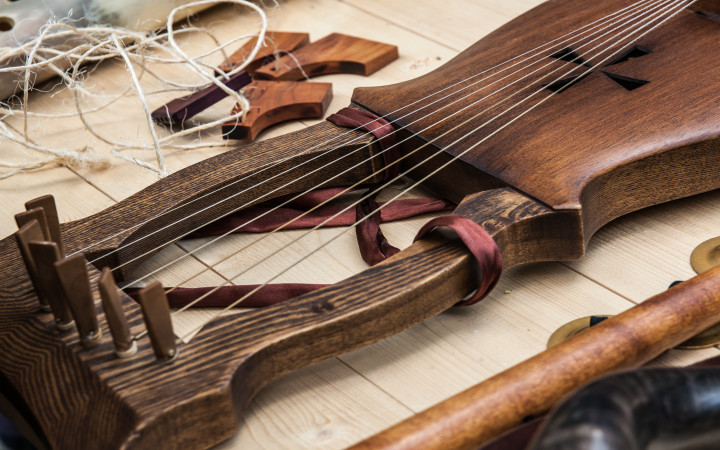Today’s Wonder of the Day was inspired by sophia. sophia Wonders, “What is a lyre?” Thanks for WONDERing with us, sophia!
Would you be mad if someone called you a liar? Of course you would! But what if you simply misunderstood? What if they weren’t calling you an L—I—A—R? What if, instead, they were calling you an L—Y—R—E? Well, as you’ll soon learn, that shouldn’t necessarily make you mad, but it would be pretty weird.
What are we talking about? The subject of today’s Wonder of the Day is the lyre, and that’s no lie! It’s an old musical instrument that got its start in ancient Mesopotamia. The lyre is a stringed instrument that looks a bit like a harp, but it sounds more like a guitar. Experts believe the Sumerians created the first lyres there thousands of years ago.
From Mesopotamia, the lyre spread all over the ancient world. It became popular in eastern Africa, where it grew to include several different styles of instruments in Egypt and Ethiopia. Lyres are still common all over the continent.
Of course, the lyre also became popular in the region that would become Europe. The instrument even holds a special place in Greek mythology. Ancient Greek legends hold that the first lyre was made out of a turtle shell by the god Hermes when he was just a baby. He then supposedly gave the lyre to his brother, Apollo, as an apology for stealing 50 of his oxen as a prank.
In Greek mythology, Apollo is often pictured with the lyre. He was the god of reason and logic, so the lyre has come to be linked with the ideas of peace and order.
Ancient lyres, some with seven or fewer strings and others with eight or more strings, have been found that date back to 2,500 BCE. They were usually played by strumming the strings like a guitar, rather than plucking the strings like a harp. The other hand was used to silence certain strings, so that strumming would create chords using only certain strings at a time.
Over the years, the word “lyre” has been used to describe other instruments, too. Smaller, common folk instruments, such as the kithara and the lute, have sometimes been called lyres. To further confuse matters, it seems that the exact number of strings and the size of the lyre has varied throughout history. So if someone claims they’re playing a lyre, just go with it and don’t call them a liar!
Throughout history, the lyre has been used in many different cultures. It was particularly popular, for example, in northern Europe amongst Germanic tribes. Some believe the lyre used to be played to accompany the reading of epic poems.
The lyre can be seen in other areas of the world, as well. For example, the lyre has long been the official symbol of the New York City Ballet. It was chosen for its representation of the traits of harmony, form, balance, and purity.
Have you ever heard the music of a lyre? Maybe you even know how to play this instrument! For some, the notes of this ancient invention seem to link the present with the past. Be sure to listen for the sound of the lyre the next time you turn on classical music.
Standards: CCRA.L.3, CCRA.L.6, CCRA.R.1, CCRA.R.2, CCRA.R.4, CCRA.R.10, CCRA.SL.1, CCRA.W.3, CCRA.L.1, CCRA.L.2




